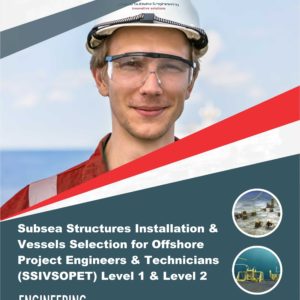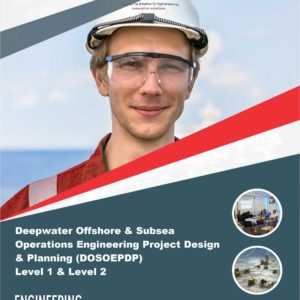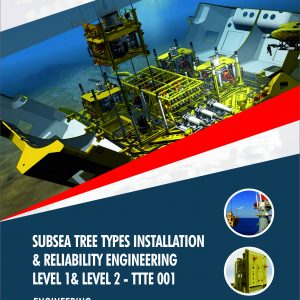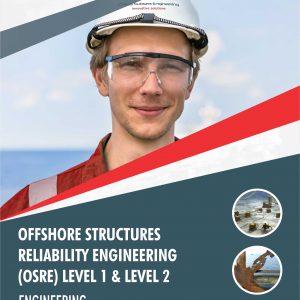Description
The IMCA certified ROV Pilot & Technician II Course is a comprehensive training program in partnership with our internation ROV technical partners designed to equip individuals with the necessary skills and knowledge to operate remotely operated vehicles (ROVs) at an intermediate level.
This course is recognized by the International Marine Contractors Association (IMCA), a leading global trade association for the offshore marine and underwater engineering industry, ensuring that the training meets international standards and industry requirements.
The course covers a wide range of topics, including ROV system components, electrical and hydraulic systems, navigation and positioning, tether management, underwater tools and sensors, ROV maintenance and troubleshooting, and emergency procedures.
Participants will engage in both theoretical and practical training sessions, gaining hands-on experience with state-of-the-art ROV simulators and actual ROV equipment. They will learn to safely and effectively operate ROVs in various underwater environments and scenarios.
Successful completion of the IMCA certified ROV Pilot & Technician II Course provides participants with a valuable qualification, opening up opportunities for employment in the offshore industry, such as in subsea inspection, maintenance, and repair operations, underwater construction projects, and offshore energy exploration.
Course Outlines
A Short History of ROV’S
Manned Underwater Vehicles
Unmanned Underwater Vehicles
ROV Types, Designs and Applications
Unmanned Vehicle (ROV) Classifications
ROV Applications
The Power Supply / Power Distribution Unit (PSU / PDU)
The Surface Control Unit (SCU)
The Hand Control Unit (HCU)
The Surface Display Unit (SDU)
Surface Ancillary Equipment
Umbilical
The underwater vehicle
Larger systems
The Deck Cable
LARS
The Armoured Lift Cable
The Tether Management System (TMS)
The Tether
Containerisation of Units
ROV Chassis
Open Frame Design
Closed Frame Design
Vehicle Construction and Materials
ROV Thrusters
Electric Thrusters
Hydraulic Thrusters
Underwater Cameras
Camera Types
Camera Lenses
Camera Housings
Pan and Tilt Units
Underwater Lighting
Types of Light Bulbs
Lamp Housings
Buoyancy and Ballast
Underwater Sensors
SONAR
Side-Scan Sonar
Parametric Sub Bottom Profiler
Pipe Tracker
Current Density Meter / Contact CP Probe
Bathy Suite
Acoustic Responder / Transponder / Pinger
Odometer
ACPD
Altimeter
Magnetometer
System Integration
Underwater Tooling
Manipulator
Boom Arms
Cable Cutter
Standard “Anvil” Cutter
Subsea Drill
Subsea Water Jetting Pump
Torque Tool
Hot Stab Tool
Tool Deployment Unit
Tooling Skid
Other Interesting Tools
Equipment Description
Crane or A-Frame Based Lifting Mechanism
Umbilical Winch and Level Wind
Active Heave Compensation Winch
The Slipring
The Umbilical Sheave Wheel
The Docking Latch and Snubber Rotator
Docking Latch
Additional Items and Terminology
Safety Considerations when using Lifting Equipment
Operational Considerations
Vehicle Recovery
Three Phase Induction motors
Principle of Operation
Testing 3 phase Motors
Important Facts
Brush-less DC Motors
Principle of Operation
Speed and torque control
Testing a Brushless Motor
Brush Type Electric Motors
Principle of operation
Speed and Torque Control
Maintenance
Electrical Power Supply Transformation and Regulation
Hydraulic Thrusters
Principle of Operation
Testing a hydraulic motor
Kort Nozzles
Propeller Design
Thruster Placement and Layout
The Video Signal
Broadcast Standards
NTSC
PAL
SECAM
The Transmission Medium
Coaxial Cable (Unbalanced Signal)
Shielded Twisted Pair (Balanced Signal)
Balanced Line Driver Cards
Fibre Optics
Radio Frequency
The Complete ROV Video Path
The Basic Version
The Deluxe Version
Video Overlays
Video Recording
Weight and Construction Material
Strength and Loading Capacity
Umbilical’s vs. Tethers – The Difference
Umbilical specifications
Power and Signal Handling Capability
Umbilical Terminations
The Topside Connection
The Subsea Connection
Buoyancy and Ballast
Buoyancy Control
Ballast Control
Vehicle Trim
Drag
Skin Friction Drag
Form Drag
Tether effects
Thrusters and speed
Propeller efficiency and placement
Deployment Techniques
The Physics of Sound in Water
The Principles of Sonar
SONAR Systems
A Single-Beam SONAR
Static Sonar’s
Rotating Sonar’s
Monotonic and Chirp SONAR’S
Profiling SONARS
Fault finding and maintenance
SEAKING SENSOR HEAD
SEAKING SURFACE UNIT
Advantages of Fibre Optics Systems
Optical Transmitters
Launching the Light
Types of Optical Fibre
Losses in Optical Fibre
Optical Fibre Bandwidth
Fibre Optic Cable Construction
Other Types of Fibres
Optical Connectors
Optical Splices
Optical Receivers
Fibre Optics in ROV Applications
Fibre Multiplexers
Fibre Optic Termination Repair
Fibre Optic Tools
Cable Preparation
Assembly
Polishing
Types of Connectors
Bulkhead Penetrators
Miniature Rubber Moulded Electrical Wet-Mate Connectors
Rubber Moulded Electrical Wet-Mate Connectors
Metal Shell Electrical Wet-Mate Connectors
Pressure Balanced Electrical Co-Axial Wet-Mate Connectors
Pressure Balanced Electrical Wet-Mate Connectors
Pressure Balanced Optical Wet-Mate Connectors
Pressure Balanced Optical Wet-Mate Connectors Joined-Chamber
Cable Connectors
GENERIC FAILURE MODES AND CAUSES
Corrosion
De-lamination
Elastomer degradation
Damage
Premature unlatching
Seal Failure
Inadequate Long-Term Protection
Connector Maintenance
Cleaning Connectors
Connector Corrosion
Connector Description
Metal Shell Connectors
Rubber Moulded Connectors
Principle of Operation – Pascal’s Law
Hydraulic Circuits and Components
Pumps
Motors
Pumps and Motors used in ROV Systems
Cylinder
Directional Control Valves
Poppet Valve
Spool Valve
Solenoid Valves
Servo Valves
Check Valves
Pressure Control Valves
Hydraulic Safety
Hydraulic Symbols
Analogue Meter
Digital Multimeters
Calibration and Checks of Test Meters
Measuring Voltage
Measuring Voltage on a Subsea Cable
Current Measurement
Clamp Meters
High Voltage Probe
Resistance and Continuity
Insulation Resistance Testing
Safety Precautions when Testing Insulation
The Oscilloscope
Measuring Signal Level
Measuring Frequency
Fibre Optic Test Set
Time Domain Reflectometry (TDR) Cable Fault Locators
Maintenance of ROV
The Basic Troubleshooting Process
Mobilisation of Crew and Personnel
Mobilisation of Operational Spares and Equipment
Mobilisation of an Entire ROV System
Administration
Installation
Safety During Checks
Contingency Procedures for a ROV System Operating from a DP Vessel using over the Side Launch and Recovery Methods
Failure of Electrical Supply from the Vessel or ROV System Generator
Complete Failure of the ROV
ROV Navigation (Gyro) System Failure
ROV Video System Failure
Failure of the TMS
Failure of the Crane or A-Frame
Failure of the Umbilical Winch
DP System Failure
ROV Entanglement
Umbilical or Tether with TMS Severance
The Client
The Client Representative
Diving Superintendent
Diving Supervisor
Inspection Co-coordinator
Surveyor
Survey Technician
Project Manager
Project Engineer
Offshore Installation Manager
Tool Pusher / Drilling Foreman
Vessel Master
Vessel Chief Engineer
ROV Personnel
ROV Supervisor
Senior ROV Pilot / Technician
ROV Pilot / Technician Grade I
ROV Pilot / Technician Grade II
The Hardwired System
VHF Radio Communications
Communications Procedures
Surface Navigation
The Space Segment
The Control segment
The User Segment
Differential GPS
Dynamic Positioning Systems
HPR Tracking Systems
LBL (Long Baseline)
SBL (Short Baseline)
USBL (Ultra Short Base Line)
Surface Structures
Jack-up Rig
Concrete Gravity Platforms
Single Buoy Mooring (SBM)
Semi-Submersible Rigs
Tension Leg Platforms
FPSO
Drill Ships
Specialised Vessels
Subsea Structures
Pipelines
Wellheads
Christmas Trees
Templates
Manifolds
Risers and Arches
Other Offshore Structures
The nature of the sea
Wind
Synoptic Charts
Wind categorisation
The Beaufort Scale
How Far is the Horizon?
Tides
Tidal Terminology
Admiralty charts
Summary
Rigging and lifting
Safety considerations
Rigging and lifting competence
Safe Working Load (SWL)
Colour coding
Correct use of equipment
Plan ahead
Inspection of lifting equipment
Rigging and lifting techniques
Knot tying
Safety Legislation
Health and Safety in the United Kingdom
Health and Safety at Work Act 1974
The Management of Health and Safety at Work Regulations 1999
Workplace (Health, Safety and Welfare) Regulations 1992
Personal Protective Equipment (PPE) Regulations 1992
Manual Handling Operations Regulations 1992
Health and Safety Information for Employers Regulations 1989
Employers Liability (Compulsory Insurance) Regulations 1969
Reporting of Injuries, Diseases and Dangerous Occurrences Regulations (RIDDOR) 1995
Noise at Work Regulations 1989
Electricity at Work Regulations 1989
Control of Substances Hazardous to Health (COSHH) Regulations 1999
Chemicals (Hazard Information and Packaging for Supply) Regulations (CHIP 2) 1994
Health and Safety (Safety Signs and Signals) Regulations 1996
Pressure Equipment Regulations 1999 and Pressure Systems Safety Regulations 2000
Lifting Operations and Lifting Equipment Regulations (LOLER) 1998
Non-Legislative Guidance Documents
Housekeeping Practices
System Certification
Safety Management Systems
Safe Systems of Work Procedures
Management of Change Procedures
Accident, Incident and Near Miss Reporting Procedures
Hazard Identification
Permit to Work System
Working Hours and Rest Periods
Offshore Survival Training
Offshore Medical Examinations
Explosive Area Zoning Introduction
Protection Methods
Zoning
Explosive Groups
Protection Types
Assessment
The IMCA certified ROV Pilot & Technician II Course includes a comprehensive assessment process to evaluate the participants’ understanding and proficiency in operating ROVs at an intermediate level.
The assessment consists of both theoretical and practical components to ensure a holistic evaluation of the participants’ knowledge and skills. The theoretical assessment may involve written examinations or quizzes covering the course topics, including ROV systems, maintenance, safety protocols, and emergency procedures.
The practical assessment focuses on evaluating the participants’ hands-on skills in operating ROVs. This may involve simulated scenarios or real-world tasks where participants are required to demonstrate their ability to maneuver the ROV, perform maintenance procedures, use underwater tools, and execute specific operational tasks accurately and safely.
The assessment process may also include evaluating participants’ understanding of industry regulations, standards, and best practices related to ROV operations. This ensures that graduates are well-versed in compliance requirements and can work within the guidelines set by regulatory bodies.
Outcome
The IMCA certified ROV Pilot & Technician II Course provides participants with the knowledge and skills required to operate ROVs at an intermediate level, allowing them to contribute effectively to offshore marine and underwater engineering projects.
Graduates of the course gain a deep understanding of ROV systems, including their components, operation, maintenance, and troubleshooting. They are equipped with the expertise to handle various tasks related to ROV operations with confidence and competence.
Successful completion of the course enables participants to apply industry-standard practices and adhere to safety protocols in ROV operations. They understand the importance of risk assessment and emergency procedures, ensuring a safe working environment for themselves and others.
Participants develop proficiency in using ROV navigation and positioning systems, as well as underwater tools and sensors. They acquire the necessary skills to conduct inspections, maintenance, and repairs, contributing to subsea infrastructure integrity and efficient project execution.
The outcome of the IMCA certified ROV Pilot & Technician II Course is enhanced employability in the offshore industry. Graduates can pursue diverse career opportunities such as subsea inspection, maintenance and repair operations, underwater construction projects, offshore energy exploration, and scientific research, providing valuable contributions to these sectors.
Professional Certificate
The IMCA certified ROV Pilot & Technician II Course awards participants with a Professional Certificate, validating their proficiency and competence in operating ROVs at an intermediate level in compliance with international industry standards.
How to Register
Click here to download registeration booklet on msword and email completed booklet to info@chesssubseaengineering.org directly.












